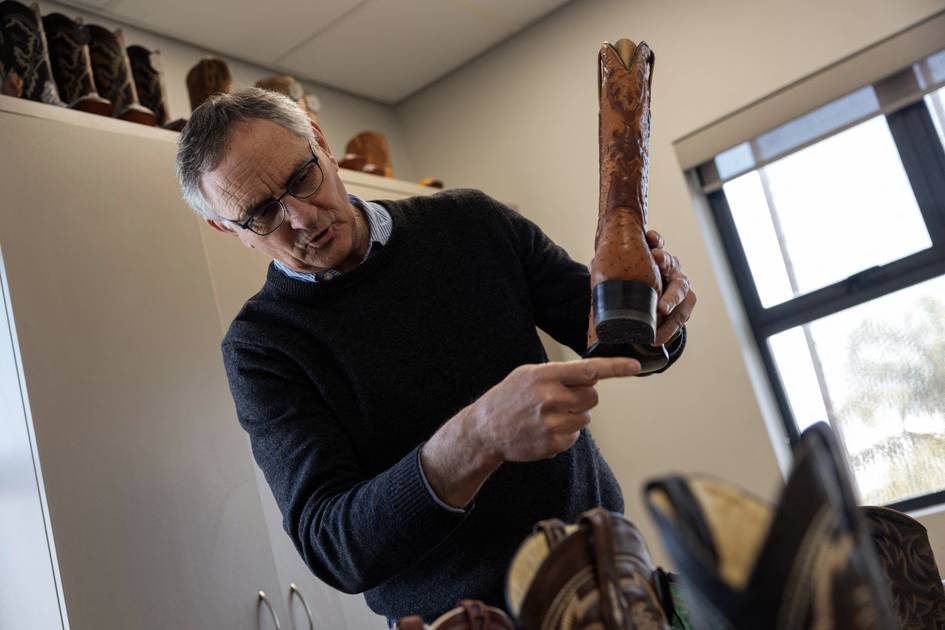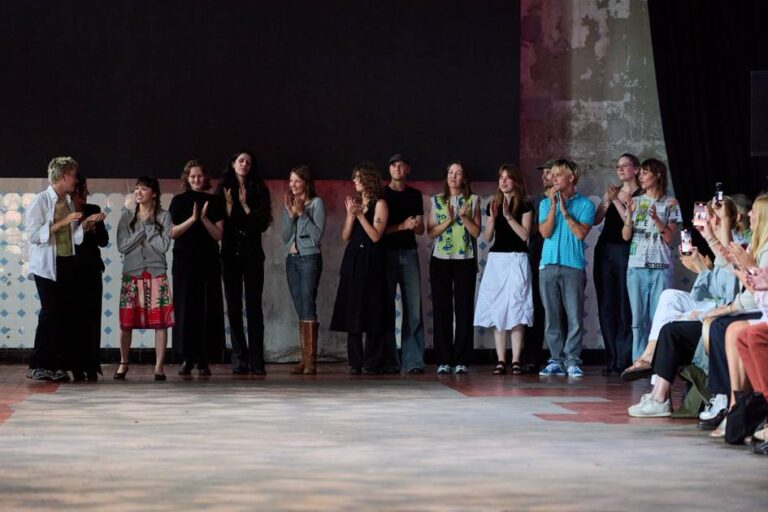Trump’s Tariffs: A Challenge for ‘Made in USA’ Cowboy Boots

The production of iconic “made in the USA” cowboy boots is facing challenges due to President Donald Trump’s impending 30 percent tariffs on South African exports, set to take effect on Friday.
Prominent Texas boot manufacturers rely exclusively on ostrich leather sourced from Oudtshoorn, a small town located 400 kilometers (250 miles) east of Cape Town.
Often dubbed the world’s “ostrich capital,” Oudtshoorn lies in the semi-arid Little Karoo valley. It’s home to hundreds of thousands of residents and a similar number of the giant, flightless birds.
“The extent of the negative impact remains uncertain, but it certainly won’t be beneficial,” stated ostrich farmer Laubscher Coetzee about the tariffs expected to come into force on August 1, after South Africa struggled to secure a new trade agreement with the Trump administration.
According to Francois de Wet, managing director of the Cape Karoo International (CKI) group, more than half of the global supply of ostrich-related products—including feathers, leather, and meat—comes from approximately 200 farmers in and around Oudtshoorn.
South Africa provides around 70 percent of the world’s ostrich product production, he added.
High-end handbag makers in France and Italy are key clients for CKI, which also supplies 20 percent of its ostrich leather to top Texas boot manufacturers like Lucchese, Justin, and Rios of Mercedes.
‘Best for Boots’
Ryan Vaughan, CEO of Rios of Mercedes, highlights that ostrich leather is “the best skin for crafting boots.” He explains that it conforms well to your foot and is highly durable, requiring minimal maintenance.
Justin Boots, another iconic brand, proudly claims its products are “made in the USA with global materials.” Lucchese, noted for its long-standing craftsmanship in Texas over 141 years, acknowledges the need to look for additional partners and raw materials beyond U.S. borders.
“We are currently assessing the impact of these tariffs on our production and products,” Lucchese commented in a release.
De Wet believes that the South African ostrich leather supply to U.S. manufacturers aligns with the Trump administration’s call for increased domestic production. He pointed out that the U.S. lacks sufficient ostrich farms to meet the demand for leather.
“We export raw ostrich leather, which can’t be produced from local U.S. farms,” he explained. “The value-added processes happen in the United States, aligning with the administration’s objectives.”
Shared Cost
The delicate skins, marked by the distinctive spots left by large ostrich feathers, are currently priced at around $20 per square foot for American manufacturers.
De Wet mentioned that there was a recent uptick in export volumes of ostrich leather to the U.S., providing a temporary buffer. “At this point, we don’t anticipate any layoffs soon. However, if the full tariff is imposed in the long run, it will significantly affect our business,” he cautioned.
He added that consumers may not be able to absorb a 30 percent increase on already premium-priced boots. “The tariff burden will likely be shared among exporters, importers, and ideally passed on to the end consumer as well.”
Coetzee emphasizes that Oudtshoorn’s unique climate, receiving less than 400 millimeters (almost 16 inches) of rain annually, is essential for successful ostrich farming. “This adaptability is crucial for the ostrich industry’s survival over the past two centuries,” he noted.
His great-grandfather established their family home in 1896 when the value of ostrich feathers was comparable to gold in the women’s fashion market. The lavish “ostrich palaces” from that era serve as a reminder of a prior market collapse in the early 1900s when the rise of motor cars diminished demand for high-feathered hats.
Have you encountered the world of ostrich leather boots before, and what are your thoughts on the impact of these tariffs?





